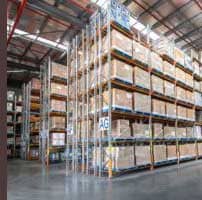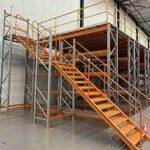Table of contents
Creating a sustainable and efficient warehouse operation is not just a moral imperative in the fight against climate change; it’s also a strategic business decision that can lead to significant cost savings and enhanced brand reputation. As the world becomes increasingly aware of the importance of sustainability, businesses are under growing pressure to reduce their carbon footprint. Warehouses, with their extensive energy usage for lighting, heating, and cooling, as well as their waste production and vehicle emissions, are a crucial focus for these efforts. This comprehensive guide explores various strategies and innovations that can help warehouses reduce their carbon footprint, improve efficiency, and contribute to a more sustainable future.
Smart Lighting Solutions
Lighting is a fundamental need in warehouses for safety and productivity. However, traditional lighting solutions can be energy-intensive and inefficient. Transitioning to LED lighting can drastically reduce energy consumption and CO2 emissions. LEDs are more energy-efficient and have a longer lifespan, reducing waste from bulb replacements. Smart lighting systems incorporating motion sensors and daylight harvesting further optimize energy use by adjusting the lighting based on occupancy and natural light levels, ensuring that energy is not wasted in unoccupied spaces or areas already well-lit by sunlight.
Heating and Cooling Efficiency
Maintaining the right temperature in a warehouse is essential for worker comfort and to preserve the quality of stored goods. This often requires significant energy expenditure, especially in large, open spaces typical of warehouses. Strategies to improve thermal efficiency include:
- Insulation and Air Sealing:
Properly insulating walls, roofs, and doors, as well as sealing leaks, can dramatically reduce the need for heating and cooling. - High-efficiency HVAC Systems:
Upgrading to more efficient heating, ventilation, and air conditioning systems can lower energy consumption. - Strategic Use of Space:
Installing partition walls to create smaller, more easily climate-controlled areas can reduce the volume of air that needs to be heated or cooled.
Renewable Energy Adoption
Incorporating renewable energy sources like solar panels into warehouse operations can significantly cut carbon emissions. Rooftop solar panels can generate a substantial portion of the electricity required to run a warehouse, especially in locations with high solar irradiance. For operations that run beyond daylight hours, battery storage systems can store excess solar energy generated during the day for use at night, ensuring a continuous, clean energy supply.
Waste Reduction and Recycling
Warehouses can generate considerable waste, from packaging materials to damaged goods. Implementing comprehensive recycling programs can help minimize this waste. Beyond traditional recycling, warehouses can explore options like composting organic waste or partnering with recycling firms that can repurpose difficult-to-recycle materials. Additionally, reducing packaging materials and switching to reusable packaging can lower waste and reduce the carbon footprint of producing and transporting packaging.
Efficient Use of Vehicles
Transportation associated with warehouse operations, from delivery trucks to forklifts, can be a significant source of greenhouse gas emissions. Transitioning to electric vehicles (EVs) for these purposes can drastically reduce emissions. EVs for warehouse operations range from electric forklifts and pallet jacks to electric delivery trucks. Investing in EV charging infrastructure powered by renewable energy can further enhance the sustainability of warehouse transportation.
Employee Engagement and Training
Creating a culture of sustainability within the warehouse is crucial for the success of any green initiative. Training employees on best practices for energy conservation, waste reduction, and efficient operation can empower them to contribute to the warehouse’s sustainability goals. Engaging employees in identifying and implementing sustainability improvements can also lead to innovative solutions and foster a sense of ownership and commitment to environmental stewardship.
Monitoring and Continuous Improvement
Implementing a system for monitoring energy use, waste production, and other key metrics is essential for understanding the impact of sustainability initiatives and identifying areas for further improvement. Regularly reviewing these metrics allows warehouses to set targeted goals for reducing their carbon footprint and track their progress over time.
Conclusion: Reduce your warehouse carbon footprint
Reducing warehouses’ carbon footprints is a multifaceted challenge that requires a comprehensive approach, combining technological innovation with strategic changes to operations and a commitment to sustainability at all levels of the organisation. By adopting these strategies, warehouses can not only significantly reduce their environmental impact but also realise cost savings, improve worker satisfaction, and enhance their reputation among consumers increasingly concerned with the environmental practices of the businesses they support. Green warehouses will be a moral and competitive necessity as the global economy continues to move towards sustainability.
Next Steps
- Learn More: Read our article on Sustainable Australian steel products
- Get a Quote: for Sydney pallet racking or Sydney Industrial Shelving
- Reach Out: For more information or assistance, contact Total Racking Systems.





